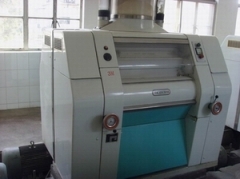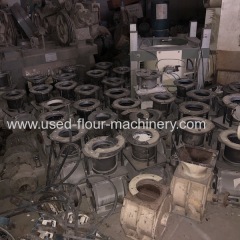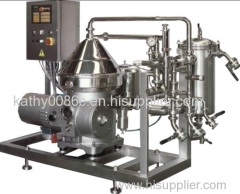
|
Shanghai ChenFei Machinery Technology Co.,Ltd
|
disc disk centrifuge for juice dairy drinks
| Price: | 1.0 USD |
| Payment Terms: | T/T,L/C |
| Place of Origin: | Jiangsu, China (Mainland) |
|
|
|
| Add to My Favorites | |
| HiSupplier Escrow |
Product Detail
Widely used in the chemical, pharmaceutical, light industry, food, biological engineering industry and transportation departments.
Application
Widely used in the chemical, pharmaceutical, light industry, food, biological engineering industry and transportation departments. In the field of food and beverage, the centrifugal equipment can dothe separation or clean processing of the fruit juice and jam of tomato, lemon, orange, mango, carrot, kiwi. Standard machine processing capacity is from 0.5 tons/hour to 50 tons/hour, which can meet the demands of different industrial applications.
Characteristics
Disc centrifuge is vertical centrifuge with compact structure, less occupied area and large production capacity. Its hub is installed in the upper vertical shaft, rotating fast through the transmission device driven by electric motor. Inside the hub there are a set of disc parts nested together with each other. Between the disk and the disk there's a very small gap. Suspension (or emulsion)goes into the rotating hub through the feeding tube locating at the hub center hub. When suspension (or emulsion) goes through the gaps between the discs, the solid particles or droplets under the action of the centrifuge will sink onto the disk forming the sediment (or liquid level). Sediment slides along the surface of the disc and moves away from the disc, and accumulates at the site of the largest diameter inside the hub, the separated liquid discharges from the rotating hub through the liquid outlet. The role of the disc is shortening the sinking distance between the solid particles and droplets, enlarging the subsidence area of rotating hub. the production capacity of centrifuge is greatly improved by installing discs on the rotating hub. the solid Accumulated in the rotating hub will be removed manually when the separator is took apart after downtime, or be discharged from the rotating hub through the slag discharge machine in the case of non-stop. Disc separator have two operations: liquid - solid separation (i.e., the separation of low concentration slurry), named clarification operation; Liquid-liquid separation (or liquid - liquid - solid) (i.e., emulsion separation), named separation operation.

















